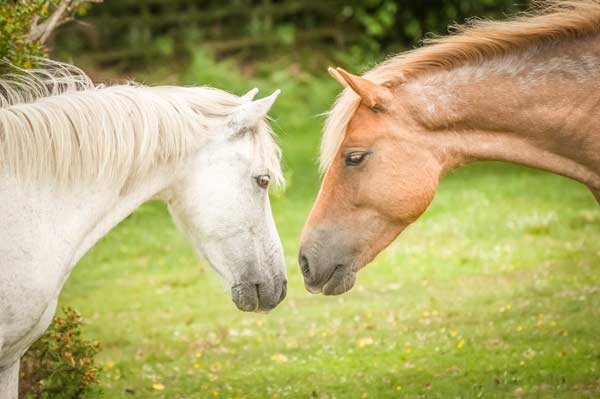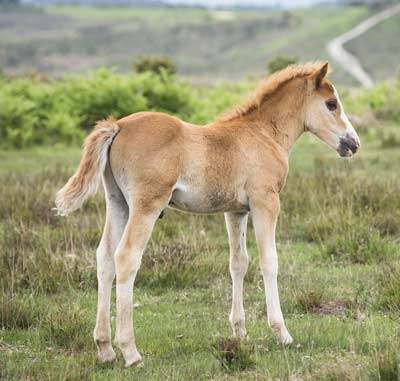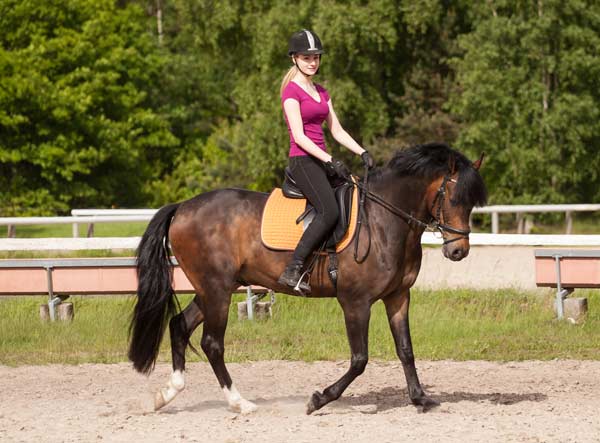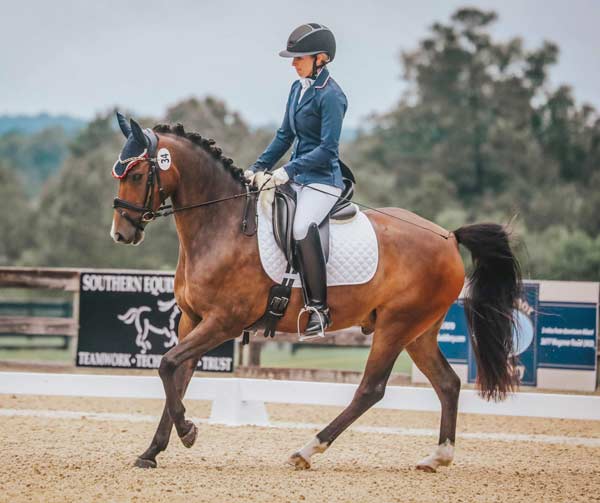
In a dense British forest of birch and oak, as old as the ice age, lives a special breed of pony. Semi-wild and living off the grass that grows in the clearings, the pony has long called this forest his home. His cousins, the other mountains and moorlands breeds, can be found throughout the British Isles.
Part of the New Forest is now a national park, while the rest of the nearly 350-square-mile forest is designated a Site of Specific Scientific Interest.

Made up of pastures, glades, ancient woods, moors, heathland and cliffs overlooking the English Channel, the New Forest created the characteristics so treasured by those who love the New Forest Pony.
Known to be hardy and sure-footed, New Forest Ponies have been bred only to each other since the early 1900s, when the New Forest Pony & Cattle Breeding Society began keeping a stud book. Prior to this time, other blood was deliberately or incidentally introduced into the breed. Because the New Forest is unfenced, it’s possible that hundreds of years ago, Dartmoor and Exmoor ponies from nearby areas wandered into the New Forest and bred with the native ponies.
As far back as the 13th century, other blood was introduced to the breed to help improve it. In 1208, some experts believe Welsh Pony mares may have been introduced to the New Forest. In 1765, a Thoroughbred stallion named Markse, who belonged to a local farmer, was used to service New Forest mares. And in 1889, Queen Victoria arranged to have Arabian and Barb stallions turned lose in the forest to breed with the ponies. Around this time, other members of the nobility also added native British breeds to the mix, such as Dales, Fells and Welsh Ponies.
Today’s New Forest Ponies
Just as in centuries past, New Forest Ponies still roam the New Forest today. Each pony belongs to a “commoner,” the name for private owners who have rights to graze livestock in the forest. This tradition goes back many years to the time when the New Forest was William the Conquerer’s favorite hunting ground, and local farmers were allowed to use the land for grazing.
Each pony living in the forest today has a brand that identifies its owner. The way the ponies are managed heralds back to British tradition, where individuals called verderers caretake the forest. Other individuals concerned with the ponies’ welfare are agisters, who collect service fees from the ponies’ owners, and cut patterns in the ponies’ tails to indicate which owners have paid.
Of course, New Forest Ponies don’t only exist in the New Forest. The breed is not only found in domestic settings in England, but also in the U.S. and Canada. The New Forest Pony Society of North America (NFPSNA) has 200 registered ponies in the two countries, including 20 licensed breeding stallions.

In North America, the New Forest Pony has proven itself to be extremely versatile, intelligent and easy to train, making it a good choice for a number of disciplines. Both adults and junior riders in the NFPSNA compete in hunters, jumpers, eventing, dressage, driving, pleasure, trail and games, as well as in 4-H events and Pony Club. New Forest Ponies have also been seen in distance riding competitions.
Part-bred New Forest Ponies are becoming popular in North America too, with breedings to European warmbloods creating a distinctive sport pony. The NFPSNA maintains a part-bred registry in addition to its purebred registry, and is seeing these part-warmblood ponies become competitive in FEI level dressage, jumping, eventing and driving.
The future is bright for the New Forest Pony, both in its native England and here in North America. Whether valued for its pure, ancient breeding or its excellent athleticism, this special equine will continue to win hearts the world over.

Fast FactsHeight: No more than 14.2 1/8 hands Associations: |
This article on the New Forest Pony originally appeared in the December 2019 issue of Horse Illustrated magazine. Click here to subscribe!





